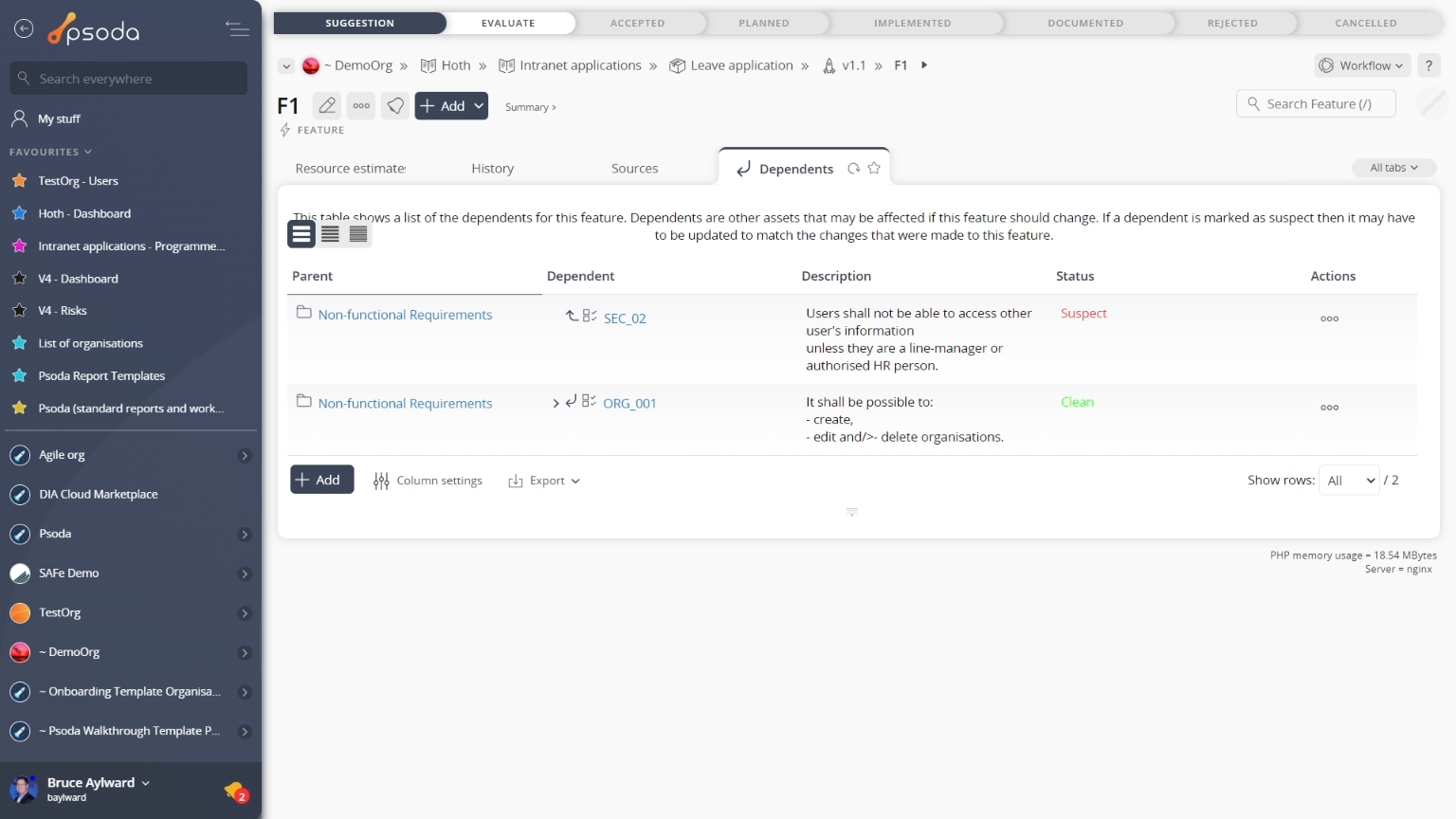
Figure 1 – Feature view page
The top header area allows you to Attachments
Attachments
This tab shows an asset listing of all of the attachments that have been added to this feature, as shown in Figure 2. By default, this table will present you with a number of details about the attachments such as the file’s name, attachment type, view the version and access a download link.
From the Actions column of this attachments table, you can act on individual attachments by 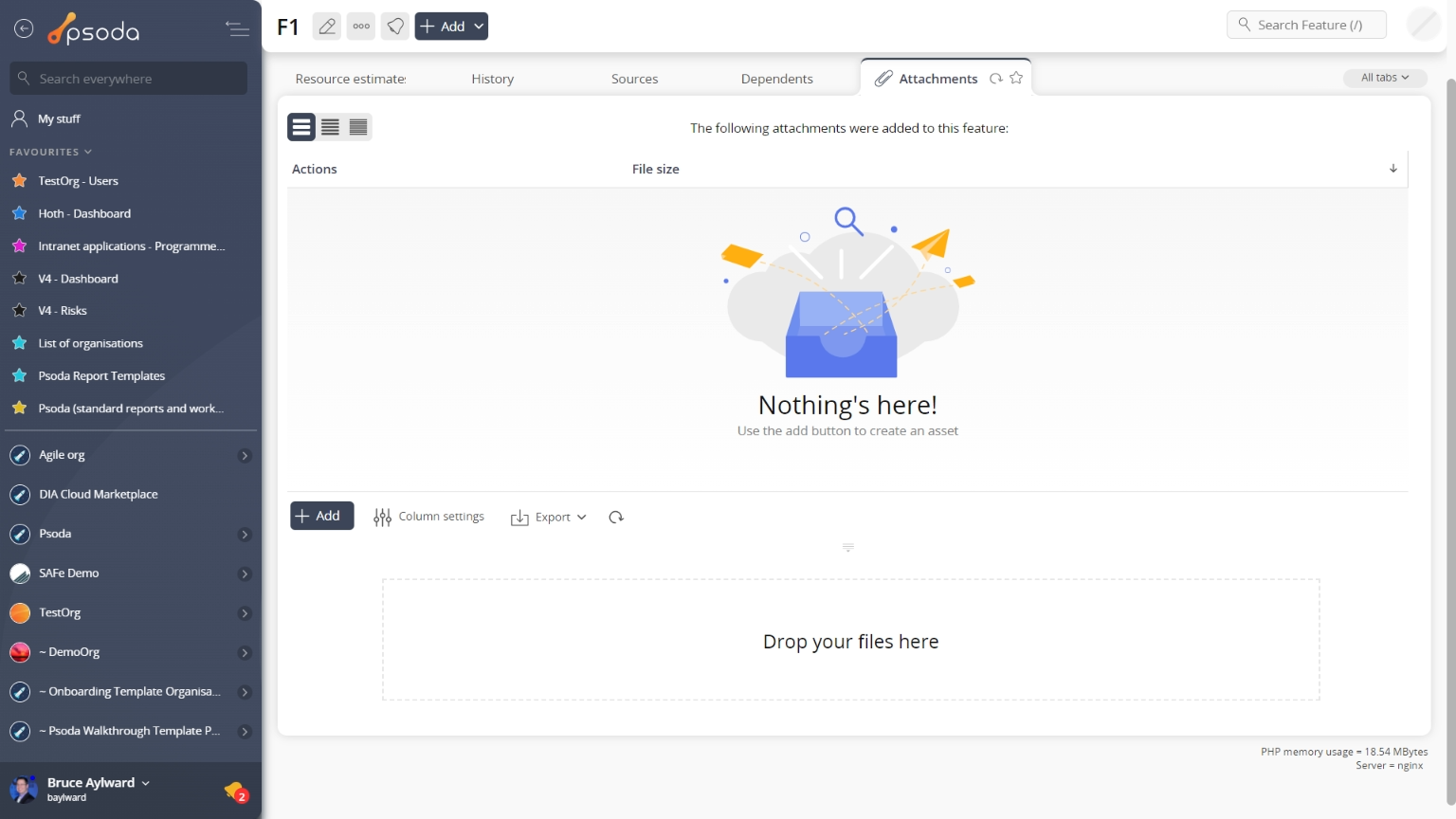
Figure 2 – Feature attachments tab
Note that you can customise your table view by clicking the Comments
Comments
This tab shows an asset listing of all of the comments that 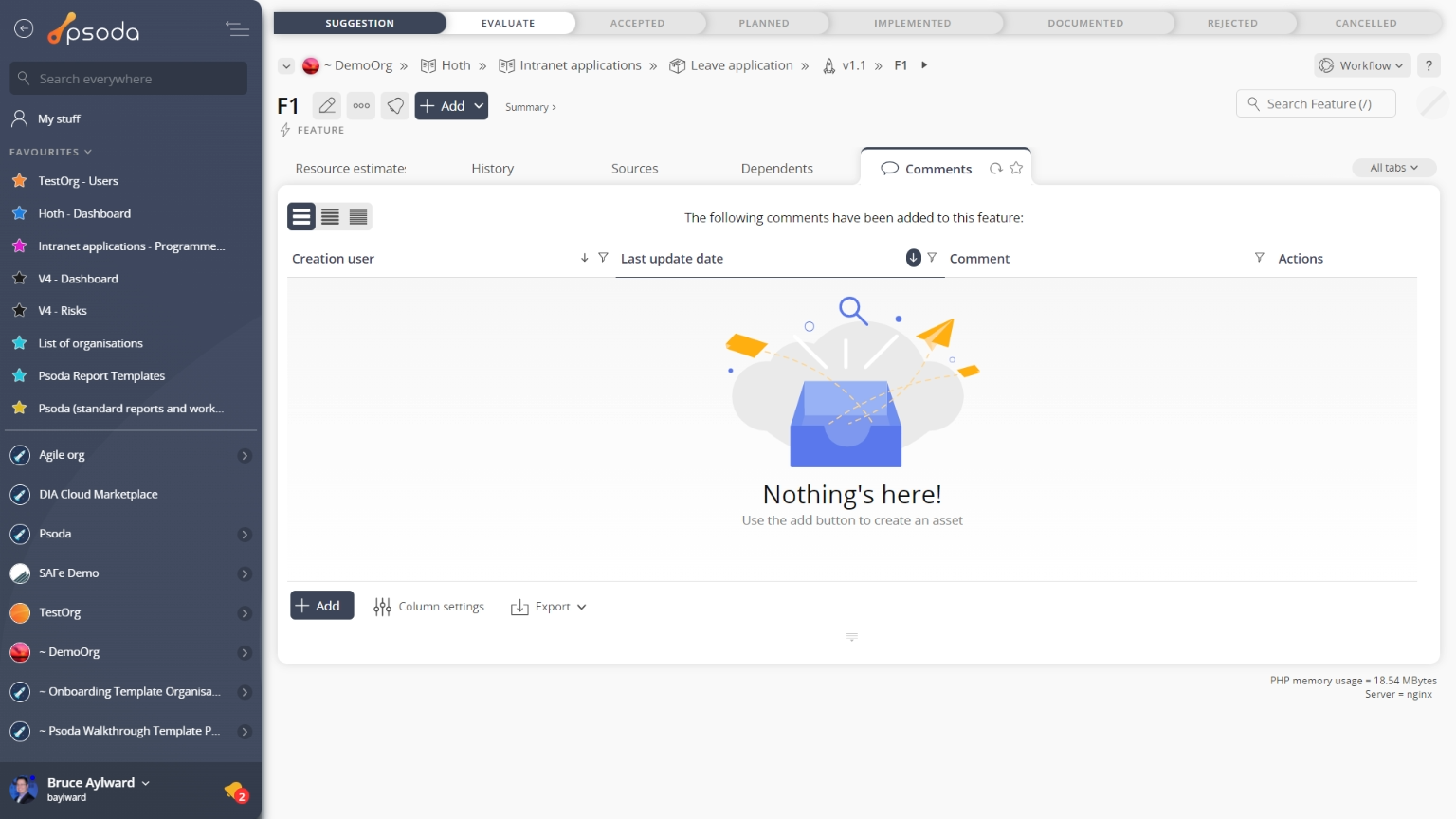
Figure 3 – Feature comments tab
Note that you can customise your table view by clicking the History
History
This tab shows shows some basic history of the feature, as shown in Figure 4. By default, this tab will present you with a number of details about the feature’s history such as the creation date, creation user, last update date and last update user. If the feature has been changed then this section will also show a table of all the changes that has been made, including the date of each change, the field changed, the value before the change and the user who made the change.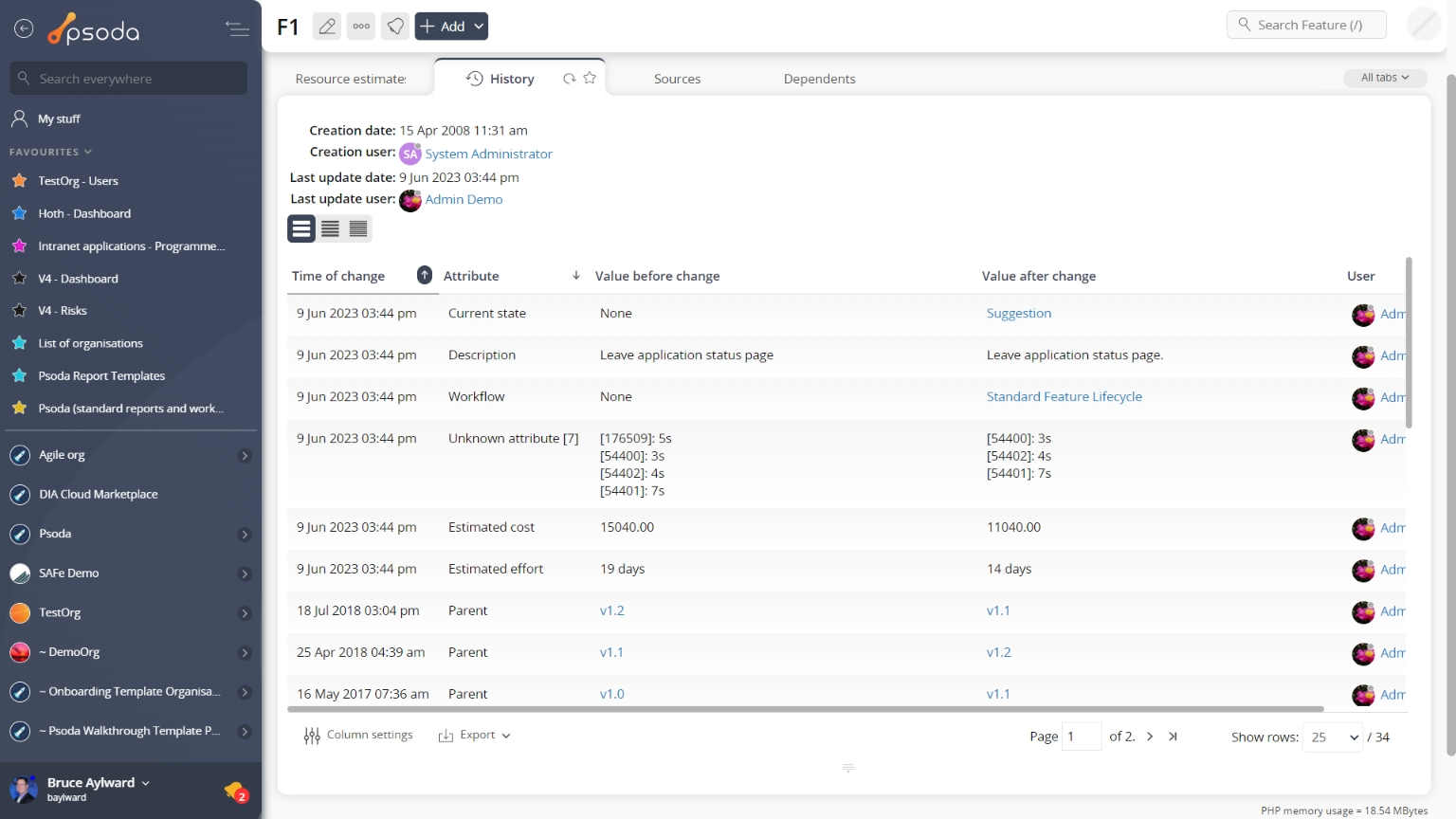
Figure 4 – Feature history tab
Note that you can customise your change table view by clicking the edit button at the bottom of the change table. Here, you can also export this list of changes to
Excel or
CSV files.
 Resource estimates
Resource estimates
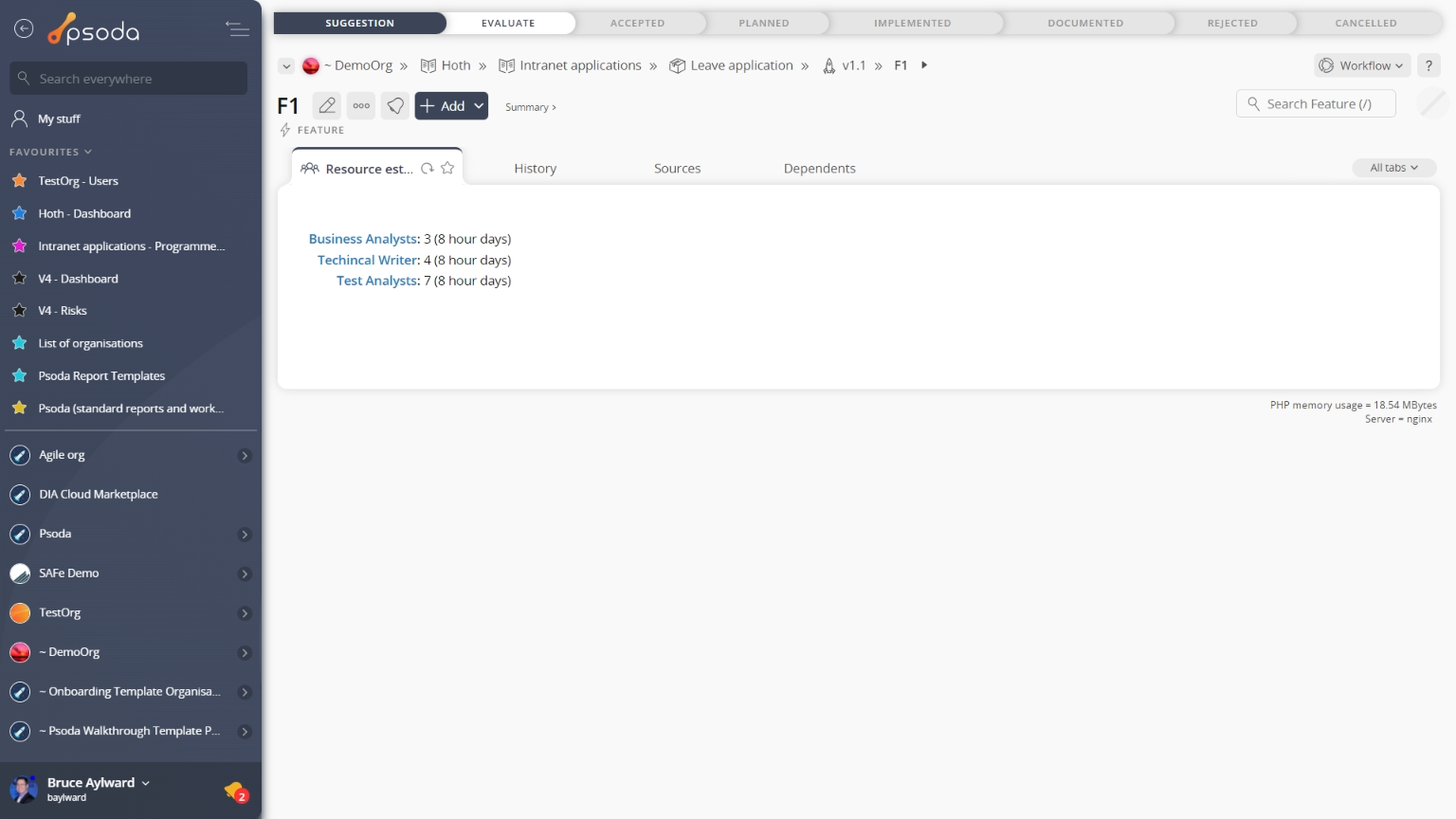
Figure 5 – Feature resource estimates tab
This tab shows the estimates for each of the resource pools allocated to the release. Sources &
Sources &  Dependents
Dependents
You can associate a feature with other assets in the system to capture the dependencies (or traceability) between the feature and those assets. This is done through adding sources or dependents.Sources are other assets that this feature is derived from, i.e. this feature can be affected if any of its sources are changed. The Sources tab asset listing of all of the sources that have been added to this feature, as shown in Figure 6. By default, this table will present you with the source’s parent asset, the source asset, it’s description and status.From the Actions column of this sources table, you can act on individual sources by 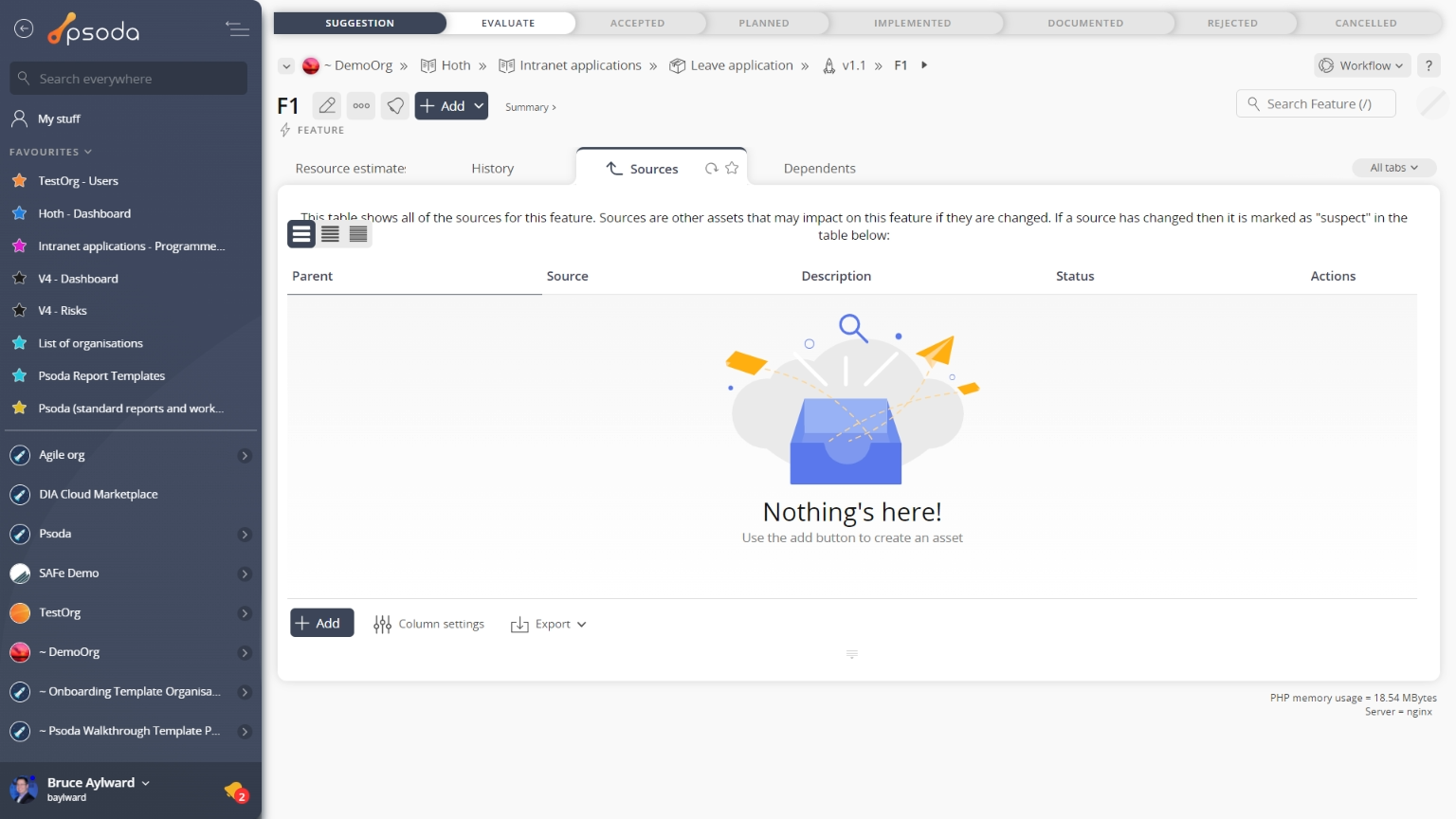
Figure 6 – Feature sources tab
Note that you can customise your table view by clicking the edit button at the bottom of the sources table or navigate to this same spot to
add more sources to this feature. Here, you can also export this list to
Excel or
CSV files.

Figure 7 – Feature dependents tab
Note that you can customise your table view by clicking the edit button at the bottom of the dependents table or navigate to this same spot to
add more dependents to this feature. Here, you can also export this list to
Excel or
CSV files.